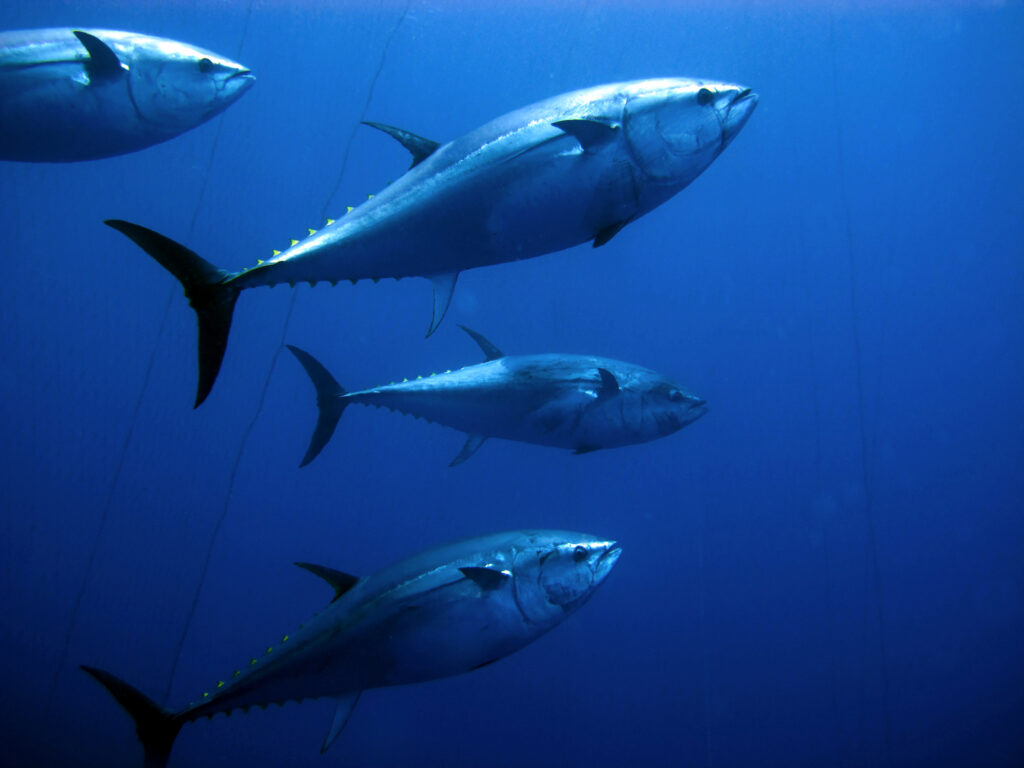Bluefin Tuna is known as the most expensive fish in the world, but for what reason, and why is that potentially a bad thing?
Bluefin Tuna can be staggeringly expensive, depending on where it was caught, and where you buy it. It’s reported that the finest Bluefin Tuna comes from Japan, and can be valued at around $200 per pound. In 2019, a perfect and giant 600-pound Bluefin sold for $3 million in Tokyo.

Read on to learn more about the extremely expensive, and increasingly rare Bluefin Tuna, and why it’s so sought after.
To Eat Or Not To Eat
Bluefin Tuna has reportedly been a target for commercial fishermen since the 1950s.
As a result of mass overfishing, the giant fish has seen a huge decline in numbers.
Within a few short decades, the Bluefin would be marked as a critically endangered species.
This is one of the driving reasons behind the staggering price point per pound. It was reported by NBC in 2019 that the levels of wild Bluefin Tuna were drastically depleting.
It was estimated that the number of Bluefin Tuna in the oceans had decreased by 96 percent.
This was when compared to pre-industrial levels before the Bluefin was commercially fished.
It’s a sad truth, but as an item increases in rarity, so too does its price, and often its demand.
The Bluefin is no stranger to this fact, being a highly sought-after ocean delicacy.
In Japan, it’s considered a prestigious fish and is served most commonly among platters of sushi and sashimi.
The Asian nation is also home to the highest-priced Bluefin Tuna in the world.
Japan has long been the epicenter for the consumption of the fish.
Of course, it’s no secret that Japan enjoys a heavy consumption of ocean-based foods, but Bluefin Tuna is one of their most highly-prized products.
Although Bluefin is caught mostly in the Atlantic and Mediterranean, the most expensive variants are sold in Japan.
In 2019, a single Bluefin Tuna sold in Tokyo for an incredible $3 million. The sale took place at the first-ever auction held specifically for Bluefin.
This fish weighed 600 pounds, which is about the same weight as a Grizzly Bear. This auction took place at a world-famous Japanese fish market.
It was a record high for the fish but stands as a perfect example of the rarity and value of the Bluefin.

Around The World
Of course, it isn’t just Japan who consumes the Bluefin Tuna. It can be found in seafood restaurants all around the world, particularly across the United States.
There are fisheries located all along the East Coast of America and in the Gulf of Mexico that catch Bluefin.
The latter is particularly popular among swordboat fishermen.
Although the fish caught in these locations isn’t as valuable as Japanese Bluefin, it’s still a worthwhile catch.
There are records that suggest Atlantic Bluefin can weigh up to 2,000 pounds, and grow to be thirteen feet in length.
As with many other places in the world, the Gulf of Mexico became overfished.
The population of Bluefin Tuna declined rapidly here, and rigid regulations were put in place.
However, it may have been a case of too little too late, as by 2019 the population of the fish was still depleting.
Regardless of its critical status, you can still buy Bluefin Tuna in eateries across the country.
Reportedly, the fish is prized mostly for the distribution of fat in the meat. It makes for a succulent taste and tender consistency that is perfect for use in sushi and sashimi.
There are many online fisheries that sell steaks of Bluefin, across the United States.
Sushinomics
Among those in the fishing industry, ‘Sushinomics’ is a common term.
It’s used to describe the ebb and flow of the fresh fish market. It’s thanks to Sushinomics that Bluefin Tuna is so expensive.
It’s a rare commodity, and therefore it’s more valuable and sought-after. As time goes on and numbers deplete, the price rises exponentially.
Globally, sushi has increased in popularity since the late 20th century.
It’s mainly because of this that many fish, such as salmon and tuna, are caught in staggering numbers worldwide.
Like many other fish, Bluefin Tuna is also farmed.
While it’s more of a mass production technique and not natural, it’s a popular way to lessen the impact on the species.
As time goes on, only dedicated conservation efforts will likely revive the population of Bluefin Tuna.
It will be interesting to see the effect this might have on the market, and of course, the value.
